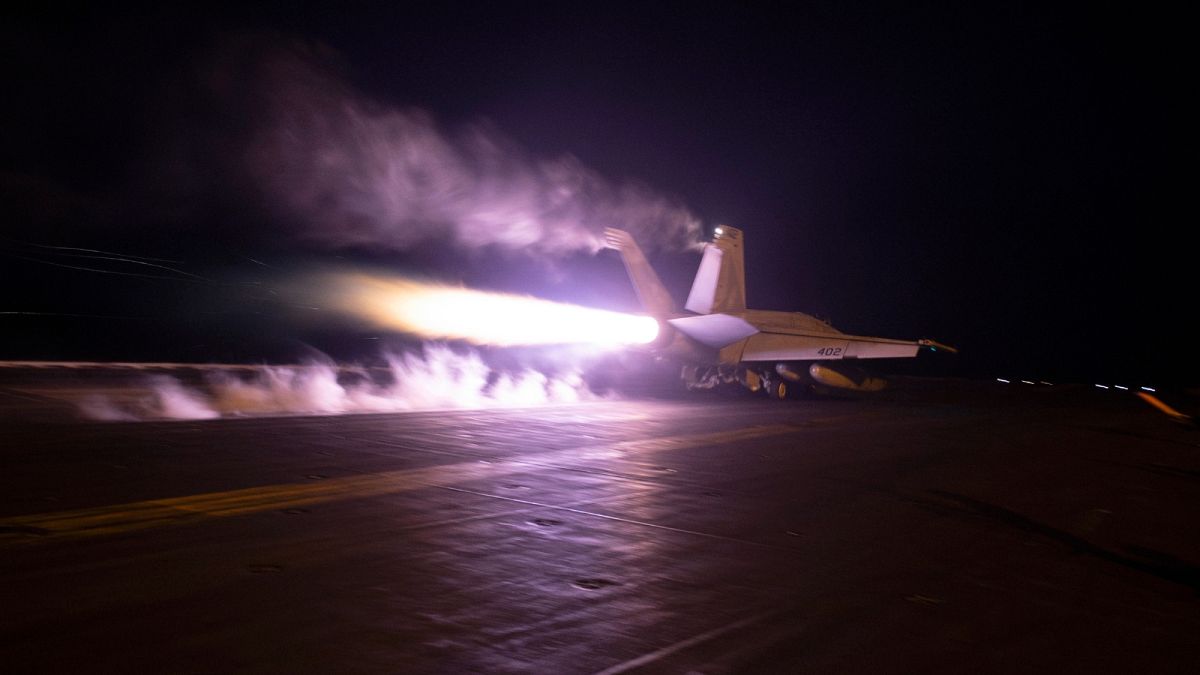The United States and Britain struck 36 Houthi targets in Yemen on Saturday in a second wave of assaults meant to further disable Iran-backed groups that have relentlessly attacked American and international interests in the wake of the Israel-Hamas war. But Washington once more did not directly target Iran as it tries to find a balance between a forceful response and intensifying the conflict.
US Central Command said its forces conducted an additional strike on Sunday “in self-defense against a Houthi anti-ship cruise missile prepared to launch against ships in the Red Sea,” according to a post on X, formerly Twitter.
“US forces identified the cruise missile in Houthi-controlled areas of Yemen and determined it presented an imminent threat to US Navy ships and merchant vessels in the region. This action will protect freedom of navigation and make international waters safer and more secure for US Navy vessels and merchant vessels,” the post added.
The strikes on Saturday against the Houthis were launched by US warships and American and British fighter jets. The strikes followed an air assault in Iraq and Syria on Friday that targeted other Iranian-backed militias and the Iranian Revolutionary Guard in retaliation for the drone strike that killed three US troops in Jordan last weekend.
The Houthi targets on Saturday were in 13 different locations and were struck by US F/A-18 fighter jets from the USS Dwight D. Eisenhower aircraft carrier, by British Typhoon FGR4 fighter aircraft and by the Navy destroyers USS Gravely and the USS Carney firing Tomahawk missiles from the Red Sea, according to US officials and Britain’s Ministry of Defence.
Strikes follow drone attack on US base in Jordan
The US warned its response after the soldiers’ deaths at the Tower 22 base in Jordan last Sunday would not be limited to one night, one target or one group.
While there has been no suggestion the Houthis were directly responsible, they have been one of the prime U.S. adversaries since Hamas attacked Israel on 7 October, killing more than 1,200 people and taking about 250 hostages. The Health Ministry in Hamas-ruled Gaza said that more than 26,000 people have been killed and more than 64,400 wounded in the Israeli military operation since the war began.
The Houthis have been conducting almost daily missile or drone attacks against commercial and military ships transiting the Red Sea and Gulf of Aden and they have made clear that they have no intention of scaling back their campaign despite pressure from the American and British campaign.
Mohammed al-Bukhaiti, a Houthi official, said “military operations against Israel will continue until the crimes of genocide in Gaza are stopped and the siege on its residents is lifted, no matter the sacrifices it costs us.” He wrote online that the “American-British aggression against Yemen will not go unanswered, and we will meet escalation with escalation.”
The Biden administration has indicated that this is likely not the last of its strikes. The US has blamed the Jordan attack on the Islamic Resistance in Iraq, a coalition of Iranian-backed militias. Iran has tried to distance itself from the drone strike, saying the militias act independently of its direction.
